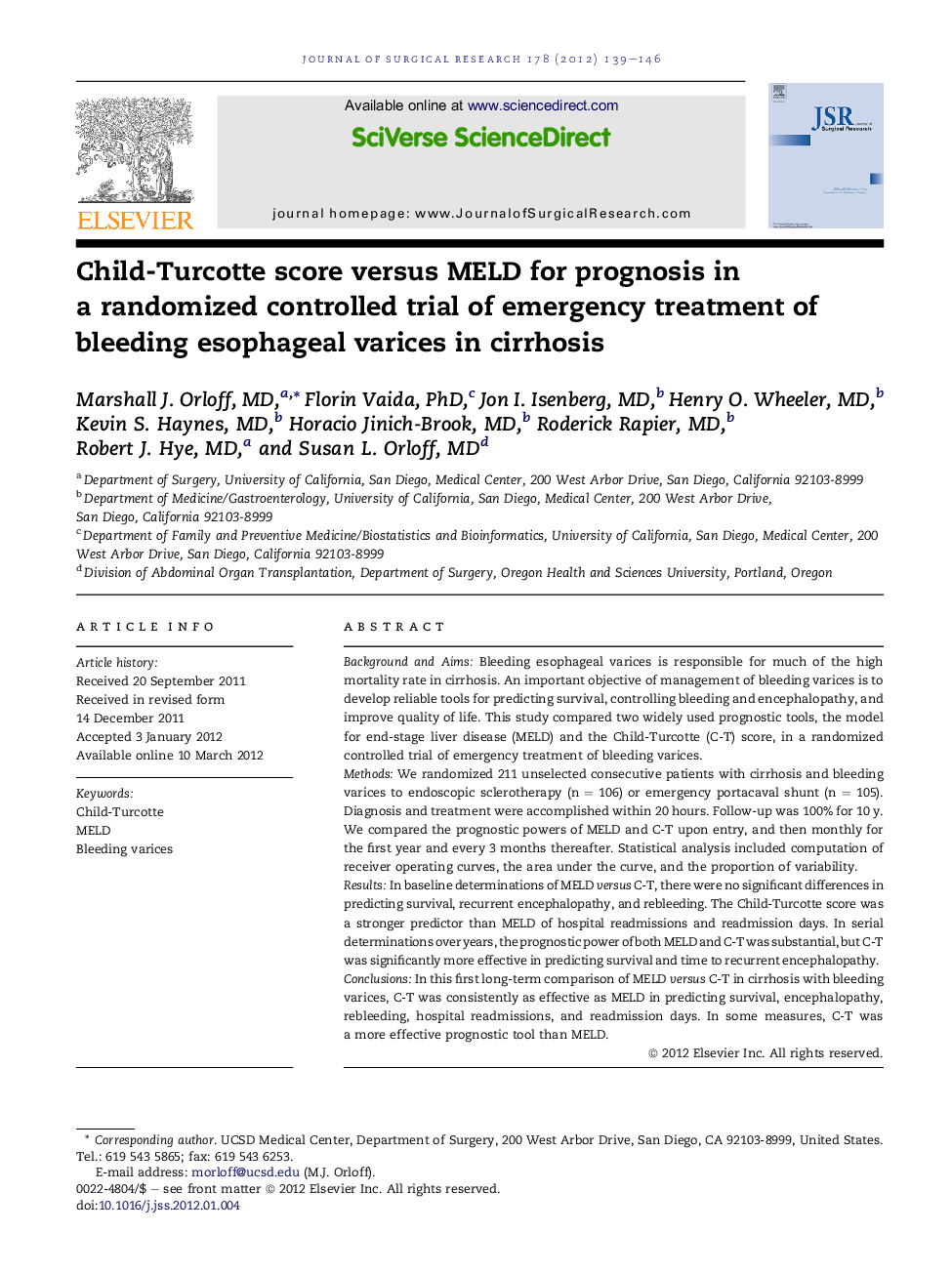| Article ID | Journal | Published Year | Pages | File Type |
|---|---|---|---|---|
| 4301376 | Journal of Surgical Research | 2012 | 8 Pages |
Background and AimsBleeding esophageal varices is responsible for much of the high mortality rate in cirrhosis. An important objective of management of bleeding varices is to develop reliable tools for predicting survival, controlling bleeding and encephalopathy, and improve quality of life. This study compared two widely used prognostic tools, the model for end-stage liver disease (MELD) and the Child-Turcotte (C-T) score, in a randomized controlled trial of emergency treatment of bleeding varices.MethodsWe randomized 211 unselected consecutive patients with cirrhosis and bleeding varices to endoscopic sclerotherapy (n = 106) or emergency portacaval shunt (n = 105). Diagnosis and treatment were accomplished within 20 hours. Follow-up was 100% for 10 y. We compared the prognostic powers of MELD and C-T upon entry, and then monthly for the first year and every 3 months thereafter. Statistical analysis included computation of receiver operating curves, the area under the curve, and the proportion of variability.ResultsIn baseline determinations of MELD versus C-T, there were no significant differences in predicting survival, recurrent encephalopathy, and rebleeding. The Child-Turcotte score was a stronger predictor than MELD of hospital readmissions and readmission days. In serial determinations over years, the prognostic power of both MELD and C-T was substantial, but C-T was significantly more effective in predicting survival and time to recurrent encephalopathy.ConclusionsIn this first long-term comparison of MELD versus C-T in cirrhosis with bleeding varices, C-T was consistently as effective as MELD in predicting survival, encephalopathy, rebleeding, hospital readmissions, and readmission days. In some measures, C-T was a more effective prognostic tool than MELD.
